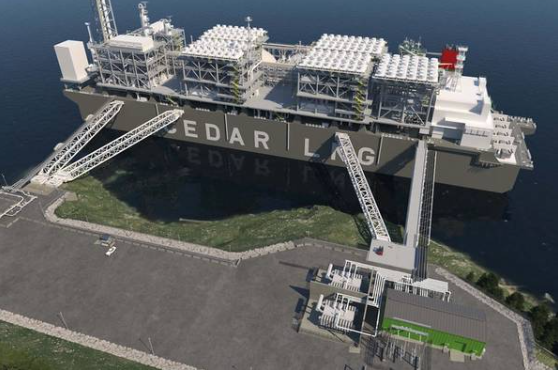
| Subject | Samsung Heavy receives a notice to proceed with Cedar LNG's FLNG project | ||
|---|---|---|---|
| Reg. date | 2024-04-11 | Views | 381 |

[Offshore Engineer Magazine/ Arpil 5, 2024] Cedar LNG has issued a notice to proceed with the engineering, procurement, and construction (EPC) of floating LNG production unit to Samsung Heavy Industries (SHI) and Black & Veatch, following the signing of a 20-year offtake agreement with ARC Resources.
According to Cedar LNG and its partners Haisla Nation and Pembina Pipeline, these critical milestones allow the project to proceed to secure financing, which is required prior to making a final investment decision (FID), expected by the middle of 2024.
To remind, the FID for the proposed floating LNG facility project in Canada's British Columbia has been postponed from the first quarter 2024 to mid-year.
In order to maintain schedule, a notice to proceed has been issued to the EPC contractors to continue the engineering, procurement and construction for the design, fabrication and delivery of the project’s floating LNG production unit.
To remind, the consortium involving SHI and Black & Veatch secured an EPC contract for the Cedar FLNG, with SHI's portion of the contract worth $1.5 billion in January 2024.
The total project cost, including $0.6 billion (gross) of interest during construction and transaction costs, is expected to be approximately $4.0 billion (gross).
The anticipated in-service date for the project is scheduled for late 2028.
Located in Kitimat, within the traditional territory of the Haisla Nation, the project is strategically positioned to leverage Canada’s abundant natural gas supply and British Columbia’s growing LNG infrastructure to produce low-carbon LNG for overseas markets.
Natural gas will be delivered to Cedar LNG through an approximately 8-kilometer-long pipeline that connects to the Coastal GasLink pipeline.
The natural gas will then be converted to LNG, before being loaded onto an LNG carrier, about once every 7 to 10 days or up to 50 times a year. Each LNG carrier will travel through Douglas Channel to Hecate Straight, using the existing deep-water shipping lane, on its way to customers in the Asia Pacific.
 HOME
HOME








